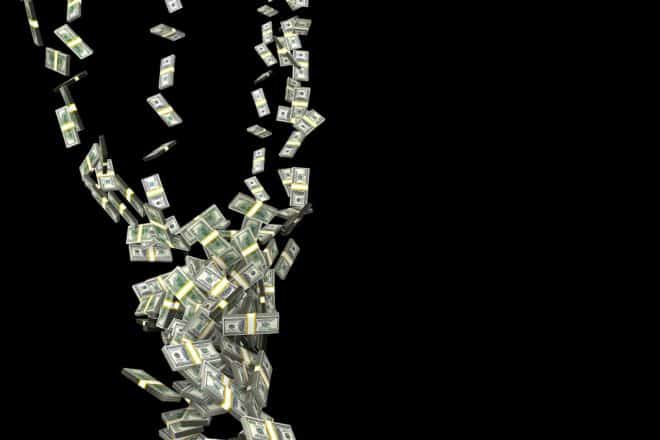Can companies profit from podcasts?

Baby boomers can regale millennials with stories of the days when TV was actually free. You received about five or six channels with your antenna with no monthly fee. Today, of course, cable companies can charge well over $200 per month for the privilege of watching 400 channels, although about 15 – plus streaming services – actually attract your eyes and ears.
Over the last 40 years, TV has explored and has extracted several successful ways to monetize TV programming beyond just ad-supported programming. Cable subscriptions, streaming and bundling with other services like Amazon with Prime have all proven to be moneymakers.
Today, podcasts are at that inflection point where the pathways to monetization and long-term, stable profitability seems endless, but the crystal ball is cloudy.
The question at this juncture isn’t whether companies can make profits from podcasts. They are and can. Rather, is there a best way to ensure the largest profit stream with the most sustainable results.
Right now, podcasts are beginning to have a moment. Recent studies by Edison Research and Triton Digital reveal that podcasts have about 90 million monthly listeners. Ears mean money in the podcast business so the wafting aroma of profits has lured small companies that have been swallowed up by larger media companies and large companies that are looking to grow a green pasture of profitability while building legal and regulatory fences to keep competitors out.
So let’s look at the current chess game being played in the podcast business as companies maneuver to find the optimal strategy for making money and limiting competition.
Podcasts as an extension of their core business
In this category, we have Spotify, which purchased Gimlet and services company Anchor for about $340 million in February. The big strategy, beyond catering to the growth of podcasts, is to develop a new channel for consumption of its core business as Courtney Holt, the head of Spotify Studios, told TechCrunch earlier this year.
“People who consume podcasts on Spotify are consuming more of Spotify — including music,” Holt said. “So we found that in increasing our [podcast] catalog and spending more time to make the user experience better, it wasn’t taking away from music, it was enhancing the overall time spent on the platform.”
That also includes a much more personal and tailored approach to content, which is important, given that Spotify offers a catalog of more than 40 million tracks.
“Think about what we’ve done around music,” Brian Benedik, VP and Global Head of Advertising Sales at Spotify, told TechCrunch. “The more understanding you have around the music you stream, the more we can personalize the ad experience. Now we can take that to podcasts.”
In April, Spotify CEO Daniel Ek was interviewed on the Freakonomics podcast and talked with host Steven Dubner about Spotify expanding from streaming music to podcasts and then possibly audiobooks, since those media formats dovetail nicely into one another.
Clearly Spotify is tuned into several key signals for the future of its business. First, streaming music has microscopic profit margins, if at all. Second, ancillary businesses like podcasts and possibly audiobooks generate higher margins while helping Spotify stand out from the streaming music crowd.
Spotify bought Gimlet for its proven content-generating ability, with successful podcasts like Science Vs, Reply All, Crimetown and Conviction. In effect, Spotify found a company proven to generate compelling content in Gimlet and Anchor to provide distribution and hosting services.
From a revenue and profit perspective, Spotify will collect ad revenue from the Gimlet podcasts but that revenue would be far short of the $200 million investment Spotify plowed into Gimlet. It seems evident that Spotify, which just announced a test of podcast playlists on its service, is hoping to attract more users to its paying service, use podcasts as a differentiation point to charge a premium or start a podcast only subscription service.
Podcasts and the subscription model – A marriage for better or for worse
The podcast world has been – up until April 22, 2019 – a congenial media space as everyone – large and small – pulled together to elevate podcasts from nerdy niche to a daily media habit. That day, Luminary announced its new monthly subscription model and tweeted out an image of a bunny holding a sign that read, “Podcasts don’t need ads.”
Related reading: Why Luminary is bound to fail
Since ads are the primary moneymaker for podcasts, the reaction from the podcast world was swift and decisive – Luminary was the enemy. Quickly, Luminary made amends and focused on its $7.99 monthly subscription model for access to celebrities Trevor Noah of The Daily Show and Lena Dunham of Girls fame, as well as podcast stalwarts Guy Raz from TED Talks and Adam Davidson from Planet Money.
Ultimately, Luminary plans at least 40 podcasts exclusive to the subscription platform. When Luminary announced its service along with its podcast app, the company initially offered podcasts free from other companies like the New York Times and Gimlet. Those podcasts and several more withheld their podcasts like The Daily from the Luminary app.
Can Luminary make money from its podcast subscription model? A cursory glance at its model suggests no to that question, since Spotify charges $9.99 per month for music and podcasts while Luminary charges $7.99 for just podcasts. So a music fan would still need a streaming subscription in addition to Luminary – a costly option.
However, let’s briefly examine what happened in satellite radio. When Sirius XM signed shock jock Howard Stern to a reported $500 million deal, skeptics scoffed at the investment in one person to juice subscriptions.
However, 13 years later, it’s clear that Stern was worth every penny. SiriusXM now has nearly 33 million subscribers – with much of that growth attributed to Stern – and profits have grown 40 percent year to year.
For Luminary, that example means that the podcast company needs a mega-hit podcast to increase the subscriber base and steer itself into profitable waters.
The partnership deal
In late May, Sony Music – the $7.2 billion global music conglomerate – announced that it had formed a joint venture with Adam Davidson, the New Yorker staff writer and co-founder of Planet Money, and Laura Mayer, the former executive producer at Stitcher.
In the joint venture, Sony Music will own 50 percent while Mayer and Davidson each hold 25 percent, with the former taking responsibility for processes such as marketing, sales, distribution, and business development, while the latter two focusing solely on the creative side.
In a press release to announce the joint venture, Adam Davidson explained, “We are a podcast company. That is, the new venture will focus on programming across a variety of genres, topics, and production types, and thus will not strictly take the form of a music podcast-centric operation. I’m sure we’ll do some music shows, but that is not our focus.”
Sony Music has dabbled in a few music-oriented podcast projects, but this new initiative is centered on building out original audio programming. An industry source familiar with the company’s plans said Sony Music’s deal with Davidson and Mayer represents the first of other podcast moves yet to come. “For Sony Music, this is just the beginning,” the source said. “Expect them to build their podcast business the way they built their record company.”
The elephant in the room dances
In early June, at its Worldwide Developers Conference (WWDC), Apple announced that its much maligned but long-lasting iTunes would be retired to be replaced by a music app, a TV/ Movie app and a podcast app.
Apple has been an early adopter in the podcasting space, with formal support for podcasts beginning in 2005 and then creating search functionality for podcasts within iTunes. In 2012, Apple launched a standalone podcast app that it included in every iPhone. Some estimates show Apple with about 62 percent market share of podcast listening. By contrast, its closest competitor, Spotify, has only six percent.
But Apple hasn’t exploited its early lead in podcasting to develop new revenue streams. And that lack of initiative was just fine with podcast content creators simply because Apple asserting itself in podcast content could mean its dominance in yet another tech market.
So is Apple up to anything new in the podcast world?
First, it could add original podcasts to its monthly Apple Music subscription model and mirror what Spotify is attempting to do. Apple has not been a supporter of bundles like Amazon or Spotify, since each of its services – from iTunes Match to iCloud to Apple Music exist on their own with no bundled price.
Second, Apple, could begin original podcast programming and create a separate subscription price for podcasts only with Apple Music having its own subscription price. Apple announced a magazine subscription service earlier this year (formerly Texture) and is thought to be rolling out a TV streaming service this autumn with pricing for the service not yet disclosed. Could a podcast service be far behind?
With a music subscription service, a magazine subscription service, an upcoming TV streaming service and storage services, a separate podcast subscription model seems unlikely in the short term. But as Apple gradually shifts from a technology hardware company to a media services company, podcasts are a natural extension of that shift from tech hardware to content creation and distribution.
Stay tuned.
The crystal ball is cloudy
Podcast subscription model? Part of a music subscription model? Ad-supported only? Paywall and free hybrid model?
Just like the headwinds in the video streaming business, no one is really sure what model or models will dominate the podcast landscape. Clearly, Luminary, like SiriusXM in satellite radio, is superglued to the monthly subscription model. The difference is that SiriusXM really has no competition in the space while Luminary faces a flotilla of competitors.
It’s entirely possible that Luminary, Apple, Spotify and other large platforms can all win with different pathways to revenue and profitability.
Ironically, the only potential loser could be the low-cost, basement podcast where two people have an idea, a microphone and free software. It would be a substantial loss if the search for revenue and bottom line results forces out the very people who started the podcast format. Take for example, science journalist Wendy Zukerman, who began a small science podcast in Australia called Science Vs. Irreverent with no fear of controversial topics, the podcast first captured the ears of U.S. listeners and then the pocketbook of podcast company Gimlet, which purchased it three years ago.
Whatever form podcast profiteering takes in the future, it seems critical that the space is still a safe haven for new ideas, diverse and unique voices and innovation.













Comments
Comments are closed.